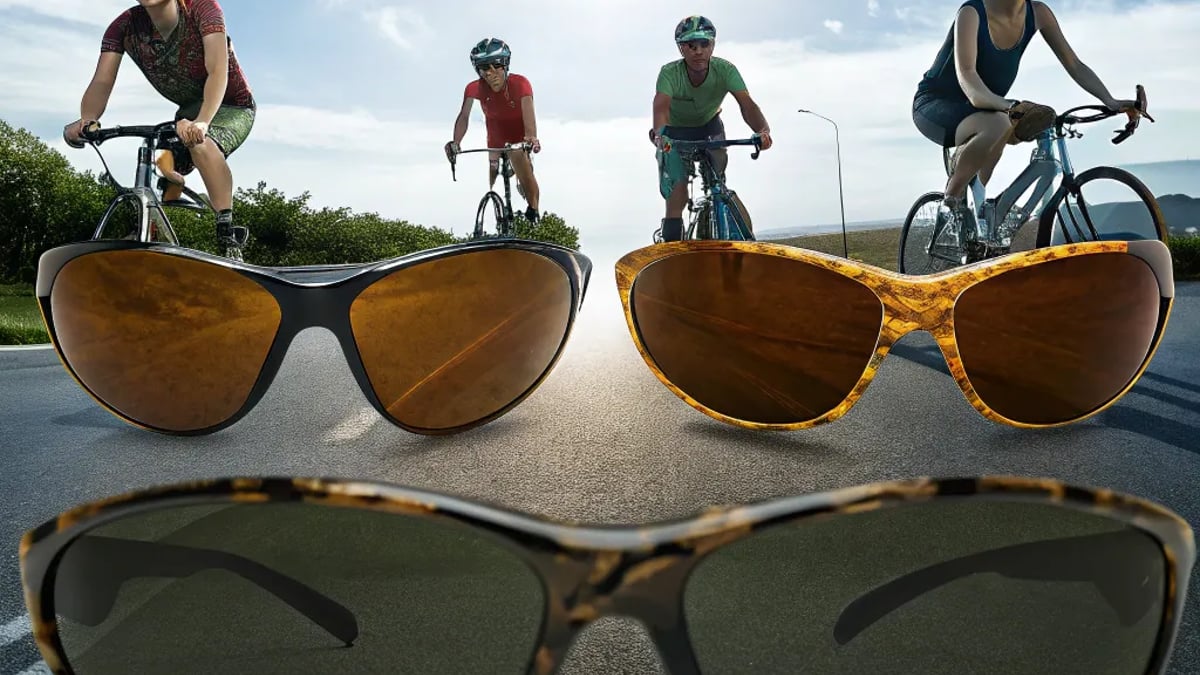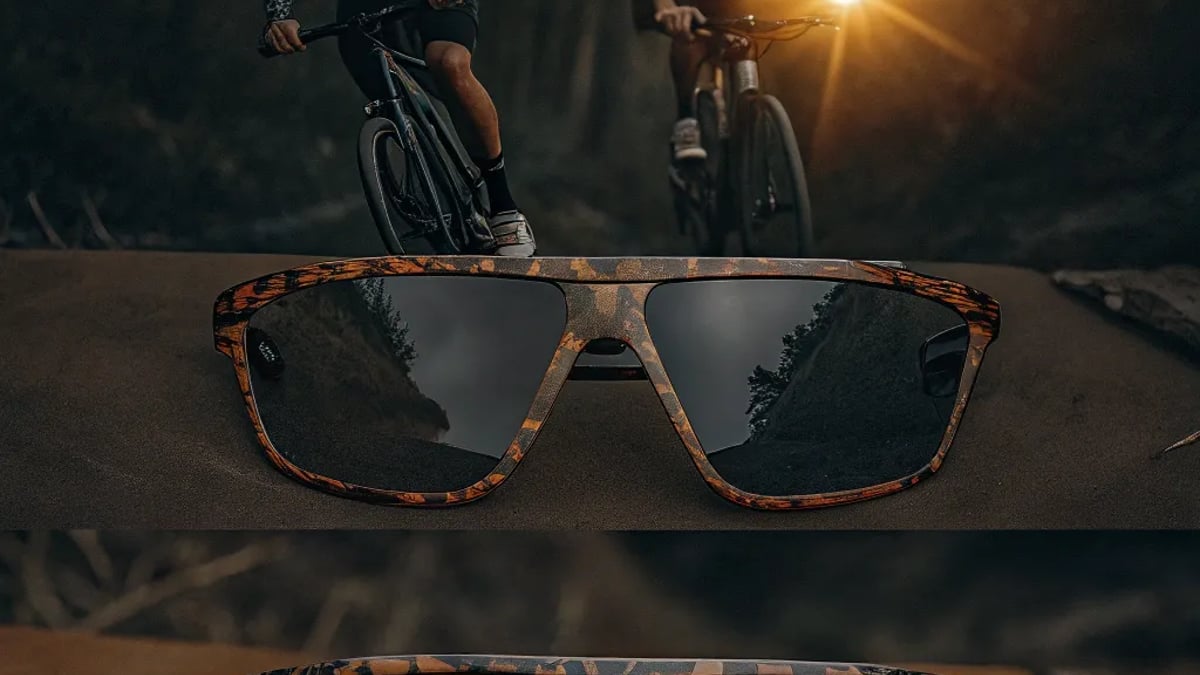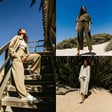
Finding the perfect pair of cycling sunglasses involves more than just picking a stylish frame. The right eyewear protects your vision while enhancing your riding experience and making a statement on the road. As cycling continues to grow in popularity, the technology behind sports eyewear has evolved dramatically, offering riders protection, performance advantages, and undeniable style.
Why Specialized Cycling Sunglasses Matter
Most casual riders don't realize that standard fashion sunglasses simply don't cut it for serious cycling. I learned this lesson the hard way last summer when my designer shades kept sliding down my nose during a steep climb outside Portland. Beyond the annoyance factor, inadequate eye protection can lead to serious long-term consequences.
Cycling sunglasses serve multiple critical functions:
- UV Protection: Blocking harmful ultraviolet radiation that can damage your eyes
- Wind Barrier: Preventing dry eyes and irritation at high speeds
- Debris Shield: Protecting against insects, dust, and road debris
- Visual Enhancement: Improving contrast and visibility in varying light conditions
- Style Statement: Completing your cycling kit with a distinctive look

The Science Behind UV Protection
Ultraviolet radiation exposure is a serious concern for cyclists who spend hours outdoors. According to the Skin Cancer Foundation, proper UV protection is essential for preventing long-term eye damage, including cataracts and macular degeneration.
Cycling sunglasses use Ultraviolet Protection Factor (UPF) ratings similar to protective clothing. As explained by the Skin Cancer Foundation, "UPF indicates how much UV radiation (both UVB and UVA) a fabric allows to reach your skin. For example, a UPF 50 fabric blocks 98% of the sun's rays."
For eyewear, look for lenses that block 99-100% of both UVA and UVB rays. This protection is independent of lens color or darkness - a common misconception I've heard repeatedly at my local bike shop.
Lens Technology: More Than Meets the Eye
The lens color of your cycling sunglasses isn't just about looks - it dramatically affects your visual experience on the road.

Lens Colors and Their Practical Applications
Different tints serve specific purposes:
- Dark Gray/Black: Best for bright, sunny conditions; maintains true color perception
- Brown/Amber: Enhances contrast in moderate light; ideal for variable conditions
- Yellow/Orange: Brightens vision in low light; excellent for dawn/dusk riding
- Clear: Maximum light transmission for night riding or extremely overcast days
- Photochromic: Automatically adjusts tint based on light conditions
One common question I've seen in cycling forums involves yellow lenses. A recent Reddit discussion highlighted an important consideration: "Probably does not block UV light. Might even fool your eyes to take in more UV than they would without any eye protection."
This underscores why you should always verify UV protection regardless of lens color. Some yellow lenses might look protective but offer minimal UV filtering - a dangerous combination since the tint can cause your pupils to dilate, potentially allowing more harmful rays to enter.
Blue Light Considerations for Cyclists
While UV protection gets most of the attention, blue light exposure is increasingly recognized as a concern. Though primarily discussed in the context of digital screens, outdoor blue light exposure is significantly higher.
According to UC Davis Health, while there isn't complete consensus on blue light filtering glasses, "they can help protect eyes from eye strain caused by overexposure to blue light."
For cyclists who also spend considerable time on devices analyzing their ride data, this dual protection becomes particularly relevant. Harvard Health notes that "Until the advent of artificial lighting, the sun was the major source of lighting, and people spent their evenings in (relative) darkness," highlighting how our exposure patterns have changed dramatically.
Frame Features That Matter for Serious Cyclists
The perfect lens means nothing if the frame doesn't perform. Key features to consider include:
Fit and Coverage
Cycling frames should:
- Wrap around your face for maximum wind and debris protection
- Stay firmly in place during aggressive movements
- Provide ventilation to prevent fogging
- Accommodate prescription inserts if needed
I've found that frames with adjustable nose pieces and temple arms offer the most customizable fit. My current Oakleys have rubber grips that actually increase their hold when I sweat - a brilliant design feature I didn't appreciate until my first summer century ride.
Material Considerations
Frame materials vary widely:
- Nylon/TR-90: Lightweight, flexible, and durable; popular for all-around use
- O Matter/Grilamid: Proprietary lightweight materials with excellent durability
- Carbon Fiber: Premium option offering minimal weight and maximum strength
- Metal Alloys: Often used in higher-end fashion-forward cycling glasses
How Do I Choose the Right Cycling Sunglasses?
Selecting the perfect pair involves balancing several factors:
- Riding Conditions: Consider your typical environment and light conditions
- Face Shape: Different frames complement different facial structures
- Integration: How well they work with your helmet and cycling cap
- Budget: Quality options exist across price points
- Style Preference: The aesthetic that matches your personality and kit
For riders who frequently transition between bright sunlight and shaded areas (like mountain bikers), photochromic lenses offer significant advantages despite their higher cost. I switched to these last year and no longer have to stop mid-ride to change lenses when conditions shift.
Special Considerations for Special Circumstances
Some cyclists have unique needs that require specific features:
For Riders with Prescription Requirements
Options include:
- Frames with prescription inserts
- Direct prescription lenses (more expensive but seamless)
- Contact lenses worn under standard cycling glasses
For Those Undergoing Medical Treatment
Certain medical treatments can increase photosensitivity. As noted by the Cancer Council Victoria, "Chemotherapy drugs can damage healthy, fast-growing cells," which can include increased sensitivity to light.
If you're undergoing treatment that affects light sensitivity, consider:
- Higher coverage frames with side protection
- Darker or specialized photosensitive lenses
- Consulting your healthcare provider about specific eye protection needs
Top Brands Worth Considering
While I won't play favorites, several manufacturers consistently produce quality cycling eyewear:
- Oakley: Pioneer in sports optics with premium offerings
- Smith: Excellent lens technology with lifestyle crossover appeal
- 100%: Professional-grade protection with bold styling
- Tifosi: Great value with performance features
- POC: Distinctive Scandinavian design with cutting-edge protection
Maintaining Your Investment
Quality cycling sunglasses aren't cheap, but proper care extends their lifespan:
- Always use the microfiber pouch for storage and cleaning
- Rinse with clean water before wiping to avoid scratching
- Store in a protective case when not in use
- Replace worn nose pieces and temple tips to extend frame life
I've had my main pair of cycling glasses for five years now - far longer than expected - simply by following these basic maintenance steps.
A Final Word on Safety and Style
While style certainly matters, never compromise protection for aesthetics. The best cycling sunglasses combine both elements seamlessly, allowing you to express your personal style while safeguarding your vision.
Disclaimer: This content is for informational purposes only and not a substitute for professional medical advice. Always consult an eye care professional for advice on UV protection and vision health.
Remember, the right cycling sunglasses are an investment in both your current comfort and your long-term eye health. Choose wisely, maintain them properly, and enjoy the road ahead with clear, protected vision.
Tags

About Evelyn Grant the Author
Evelyn Grant is a trailblazer in the world of cycling fashion, known for combining functionality with style. With over a decade of experience, she designs apparel that meets the demands of avid cyclists while making a bold fashion statement.
Recommended Articles
The Eye and Ear Checks That Catch What You Can’t See
Regular eye and ear checks are vital for health, uncovering hidden conditions to ensure proactive care and overall well-being.
Clothing That’s Both Comfortable and Easy to Wear
This guide emphasizes the significance of selecting comfortable and easy-to-wear clothing, highlighting adaptive clothing options for seniors and newborns, and recommends breathable, non-irritating fabrics like cotton and bamboo. It also provides practical tips for choosing attire suitable for medical appointments to accommodate various health and mobility needs.
Market Analysis of Shoes Company: Trends for 2025
By 2025, the footwear market is expected to grow significantly, with particular opportunities in the senior safety footwear segment due to increasing demand for products that prioritize both safety and style. Companies that integrate advanced technologies, such as smart health-monitoring features, and prioritize design elements inspired by insights from related industries, can tap into this expanding market and leverage cross-category consumer preferences for multifunctional and aesthetically pleasing products.
Church Clothes for Women: Classic, Modest & Elegant
Church attire for women should balance style and modesty, with options like midi and maxi dresses, A-line silhouettes, and layered ensembles to suit personal faith journeys and seasonal changes, while evolving standards may guide these choices; most denominations accept business casual as appropriate for newcomers.
Church Fashion 2025: Styles for the Modern Woman
As we approach 2025, church fashion for women is evolving to blend traditional modesty with contemporary style, emphasizing versatility and personal expression through trends like layered outfits, sustainable materials, and bold color palettes, while maintaining respect for sacred spaces. Women can update their church wardrobes affordably by repurposing existing pieces, investing in versatile staples, and utilizing accessories, with modern modest outfits now seamlessly transitioning from Sunday services to everyday settings.




